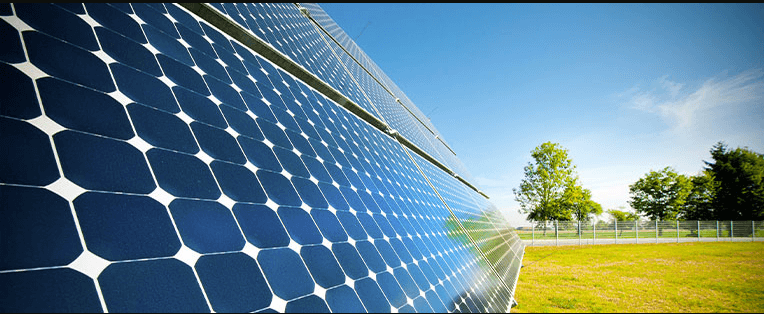
In recent years, the growing interest in renewable energy sources has led to an increased demand for solar power solutions. As solar technology becomes more accessible and cost-effective, many individuals and businesses are considering solar panel installations to reduce their carbon footprint and lower energy expenses. However, the upfront cost of solar systems can be a significant barrier for some. That’s where solar loans come into play. In this article, we will delve into the world of solar loan calculator, exploring what they are, how they work, and the benefits they offer.
1. What is Solar Energy?
Solar energy is a renewable, clean source of power that harnesses sunlight and converts it into electricity. These panels contain semiconductor materials that generate direct current (DC) electricity when exposed to sunlight.
2. The Benefits of Solar Energy
Switching to solar energy offers various advantages, both for individuals and the environment. Notable benefits include reduced electricity bills, decreased dependence on fossil fuels, and a positive impact on the planet by reducing greenhouse gas emissions.
3. Understanding Solar Loans
3.1 How Do Solar Loans Work?
Solar loans function similarly to traditional loans, but with a focus on financing solar energy projects. The loan amount covers the cost of solar panel installation, and borrowers repay the loan over time, typically through fixed monthly installments.
3.2 Types of Solar Loans
There are different types of solar loans available, such as secured loans, unsecured loans, home equity loans, and solar leases. Each option comes with its terms and conditions, allowing borrowers to choose the one that best suits their financial situation.
4. Advantages of Solar Loans
4.1 No Upfront Costs
One of the most significant advantages of solar loans is that they eliminate the need for a large upfront payment. This makes solar energy more accessible to a broader range of homeowners and businesses.
4.2 Tax Incentives and Rebates
Many governments and states offer tax incentives and rebates to encourage the adoption of solar energy. These financial benefits can significantly reduce the overall cost of the solar system.
4.3 Energy Savings
Once the solar panels are installed, homeowners and businesses can enjoy substantial energy savings, as they generate their electricity from the sun’s free and abundant energy.
4.4 Increased Property Value
Solar panel installations can boost the value of a property, making it an attractive feature for potential buyers if the property is put on the market.
5. Finding the Right Solar Loan Calculator
5.1 Online Solar Loan Calculator
Several online tools can help individuals estimate the potential costs and savings of their solar energy projects. These solar calculators take into account factors like location, system size, and local energy rates.
5.2 Factors to Consider
When using a loan calculator, it’s essential to consider aspects such as interest rates, loan terms, and available incentives to make an informed decision about financing options.
6. How to Use a Loan Calculator
6.1 Input Your Details
To use a solar calculator effectively, input relevant information such as the location, electricity usage, and the size of the solar system you are considering.
6.2 Understanding the Results
The calculator will generate a detailed breakdown of the estimated savings, payback period, and return on investment based on the provided data.
7. Choosing the Best Solar Financing Option
7.1 Banks and Credit Unions
Banks and credit unions often offer solar loans with competitive interest rates and flexible repayment terms.
7.2 Solar Installers and Vendors
Solar installers and vendors may have partnerships with financing institutions, offering attractive loan packages for their customers.
7.3 Government Programs
Government-sponsored solar programs and incentives can provide financial assistance and make solar energy more affordable for many individuals.
8. The Application Process
8.1 Pre-qualification
Before applying for a solar loan, individuals must go through a pre-qualification process to determine their eligibility.
8.2 Documentation
Applicants need to provide various documents, including proof of income and identification, to complete the loan application.
8.3 Loan Approval
Once the documentation is in order, the lender will review the application and approve the loan if all requirements are met.
9. Financing for Commercial Solar Projects
9.1 Power Purchase Agreements (PPAs)
PPAs allow businesses to purchase solar energy from a third-party provider, eliminating the need for upfront investments.
9.2 Solar Leases
Solar leasing agreements enable businesses to lease solar panels, reducing initial costs and maintenance responsibilities.
10. Maintenance and Warranty Considerations
10.1 Solar System Maintenance
Regular maintenance of the solar system is crucial to ensure optimal performance and longevity.
10.2 Warranty Coverage
Understanding the warranty coverage provided by the solar panel manufacturer and installer is essential for protecting the investment.
11. Evaluating Return on Investment (ROI)
11.1 Calculating Solar Savings
Determining potential energy savings and payback periods is vital in assessing the long-term benefits of the solar system.
11.2 Payback Period
The payback period represents the time it takes for the solar energy savings to cover the initial investment. Read more…
12. Frequently Asked Questions (FAQs)
- Can I apply for a solar loan with a low credit score?
- Are there any incentives for installing solar panels on a commercial property?
- How long do solar panels typically last?
- Can I add more solar panels to my system in the future?
- What happens if I decide to sell my property before the loan is fully repaid?
Conclusion
Solar loans provide a viable and affordable solution for individuals and businesses interested in harnessing the power of solar energy. By using solar loan calculator and considering various financing options, transitioning to renewable energy becomes an achievable goal. Investing in solar energy not only benefits the environment but also offers substantial long-term savings on energy bills. So, take the first step towards a greener future by exploring solar loan options and embracing sustainable energy sources.




